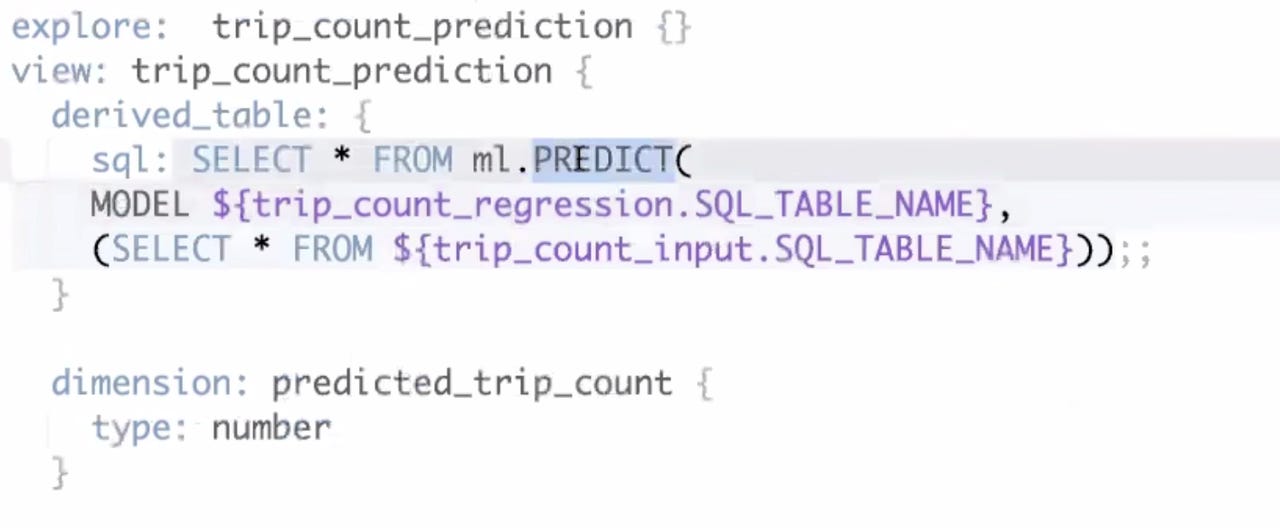Looker and Google team up around BigQuery Machine Learning

At it Cloud Next conference in San Francisco today, Google is announcing new machine learning (ML) capabilities in its BigQuery cloud data warehouse service. This new service within a service is, logically, called BigQuery ML (BQML).
Also read: Google BigQuery: Self-service cloud data analysis, from your iPad or desktop
Also being announced at Google Cloud Next, visual analytics darling Looker is partnering with Google to integrate its platform with these new ML features. Looker is effectively providing a front-end for BQML, covering the preparation of training data, the triggering of the training process on BigQuery, running predictions against the trained model and then monitoring its performance.
Also read: Looker announces version 5, doubles down on data platform play
How things work
Looker's Chief Data Evangelist, Daniel Mintz broke it all down for me. He explained that Google has made BQML capabilities available via BigQuery standard SQL. That's fairly democratizing move that brings ML to lots of developers and even some business users. However, Looker adds value and abstraction on top of that, broadening the audience further.
That's because LookML, Looker's modeling language, has been enhanced to let users define the features (input columns) and label (predicted column) in a data set, with which to train a machine learning model. Combined with Looker's native connector for BigQuery, this provides access to BQML feature set, right from the Looker product, as shown in the figure below.

LookML script executing a prediction query (performing inference) against a machine learning model
Looker has built-in data preparation and, of course, analysis features. This allows for preparation of training data, right inside Looker. The prepped data set can then be used to train a model, not in Looker but on BQML itself. And once the model is built, Looker can run predictions (i.e. score the data, perform inference) against it, once again using its own data set. According to the company's press release, BQML predictive functionality will be integrated into new or existing Looker Blocks, giving access to predictive measures in dashboards and applications.
Model management
Furthermore, since BigQuery exposes the trained model as if it were a database table, Looker can query its contents and visualize them, and can monitor the model's accuracy, all of which which provides the ability to create operational dashboards for model management, as shown below. Looker's scheduling and alerting add additional operational capabilities to the solution.
Viewing model metrics in a Looker dashboard
The BQML integration gives Looker a surprisingly good end-to-end machine learning story and Mintz made clear that similar integration with other machine learning platforms was quite feasible. Meanwhile, data scientists can still do the modeling work in their environment of choice if they want to, leveraging Looker for data prep, inference and model management.
This kind of integration is what the industry needs in order to increase adoption of machine learning, deep learning and AI. Google has seemingly done a good job at the platform level and Looker has apparently added value and integration at the top of the stack.